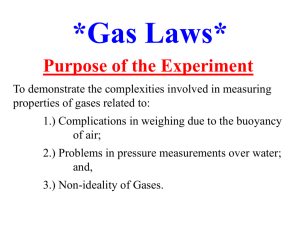
The composition in mole fractions is as follows:N-butane (xA=0.40)N-pentane (xB=0.25)N-hexane (xC=0.20)-base componentN-heptane (xD=0.15)Calculate the boiling point of feed and composition of vapor in equilibrium.Calculate the dew point of feed and composition of liquid in equilibrium. MULTICOMPONENT SYSTEMNumber of Plates RequiredIf B is the base component ĮXAMPLE: BOILING POINT,DEW POINT, AND FLASH VAPORIZATION OF MULTICOMPONENT FEEDA liquid feed to a distillation tower at 405.3 Kpa abs is fed to a distillation tower. MULTICOMPONENT SYSTEMNumber of Plates RequiredIf the composition of the liquid on any plate is known, then the composition of the vapor in equilibrium is calculated from a knowledge of the vapor pressure or relative volatilities of individual component.A mixture of components A, B, C & D, etc have mol fractions xA, xB, xC, xD etc. MULTICOMPONENT SYSTEMFlash DistillationAfter rearrange the equation before

Since the distillate and bottom streams are in equilibrium, MULTICOMPONENT SYSTEMFlash Distillation, f = V/FFrom equation
#Depriester chart calculator online trial
MULTICOMPONENT SYSTEMDew Point.initial condensation temperatureMust satisfy the relation xi=1.0Īlso trial and error calculationAfter final T is known, liquid composition calculated from Get the K value from from Depriester Chart.įor the second trial, use 69oC and follow the same procedure. Solution: Assume a temperature and find the K values forall component. Calculate theboiling point and the vapor in equilibrium with the liquid. The composition in mole fractions isas follows: n-butane (xA=0.40), n-pentane (xB=0.25), nhexane (xC=0.20), n-heptane (xD=0.15). MULTICOMPONENT SYSTEMBubble PointIf the values differ, the calculated temperature is used for the next iteration.After the final temperature is known, the vapor composition is calculated fromĮxample 1A liquid feed to a distillation tower at 405.3 kPa abs is fedto a distillation tower.


MULTICOMPONENT SYSTEMBubble PointFor a mixture of A, B, C and D with C as the base component:Assume the temperature.Calculate the value of i from the value of Ki at this temperature.Calculate the value of KC fromĬompare the temperature corresponding to the calculated value of KC to the assumed temperature. If the summation Kixi = 1.0, the composition of the vapor in equilibrium with liquid MULTICOMPONENT SYSTEMBubble PointIf the summation Kixi > 1.0, a lower temperature is chosen and repeat the calculation until the equation is satisfied. The temperature is assumed and values of Ki are obtained from vapor pressure data and the known total pressure. MULTICOMPONENT SYSTEMBubble Point.initial boiling point of a liquid mixture.Must satisfy the relation yi=1.0 The ratio of K factor is the same as the relative volatility of components: MULTICOMPONENT SYSTEMPhase equilibrium in multicomponentK factor strongly temperature dependent because of the change in vapor pressure. MULTICOMPONENT SYSTEMPhase equilibrium in multicomponentRelative volatility (i) for each component in a multicomponent can be defined similar with binary mixture.If component C in a mixture of A, B, C and D is selected as the base component, MULTICOMPONENT SYSTEMPhase equilibrium in multicomponentFor ideal solutions, the equilibrium data can be calculated from the Raoults and Daltons Law Raoults law (ideal system)K (for non ideal system-dependant on T and P) K= ratio of mole fraction in vapor and liquid phases at equilibriumThe value of K are available from Depriester Chart. MULTICOMPONENT SYSTEMFor non ideal solution (hydrocarbons), the equilibrium data can be described by K factors (distribution coefficient) MULTI COMPONENT SYSTEMSeparation of more than two components.Base on the relative volatility i value of each components, (light or heavy components) CLB 20804 MASS TRANSFER 1CHAPTER 2 DISTILLATION


 0 kommentar(er)
0 kommentar(er)
